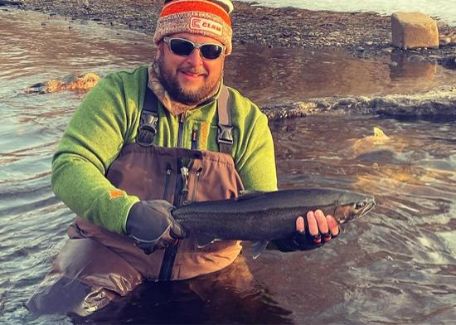We are excited to share our expertise and demonstrate how RETTEW’s services can help you minimize project delays and change orders and reduce liability. We’ll also highlight some of our people so you can be sure you are getting the best in the business when you work with RETTEW.
Quality Levels: What’s in it for SUE?
With subsurface utility engineering (SUE), engineers are able to manage the risks related to mapping utilities. The reliability of utility data collected in the field is classified using one of four quality levels (QL). Quality Level D data is the least reliable, whereas Quality Level A data is the most accurate.
Quality Level D (QL-D), known as records research, produces the most basic level of information for utility data. QL-D is procured solely from existing utility records or verbal recollections.
Obtaining QL-C data involves surveying visible utility facilities (manholes, valve boxes, etc.) and correlating that information with existing utility records (QL-D information).
Locating QL-B entails applying the appropriate surface geophysical methods, such as electromagnetic locating or ground penetrating radar, to determine the approximate horizontal position of the utilities. Also known as utility designation, Quality Level B is not to be confused with the Pennsylvania One Call System (POCS), which provides only public utility information.
QL-A utility data, the most accurate information for mapping utilities, requires physically exposing and measuring the utility size and elevation. It is commonly referred to as utility location.
Leveling Up: The Benefits of Comprehensive SUE
An old bridge crossing a small river in a picturesque town needed to be replaced. Multiple utilities threaded through the location, most of which would have to be rerouted during the bridge replacement project.
RETTEW SUE crews joined forces with the design and construction teams to conduct historical records research (Quality Level D) and visual observation (Quality Level C) to identify the location of utilities and subsurface structures within the roadway and construction area limits, such as sewer access holes, utility poles, hydrants, and valves.
Next, using Quality Level B geophysical methods, including electromagnetic survey, ground penetrating radar, and metal detection, RETTEW’s SUE crew mapped the locations of known and unknown utilities and structures, like underground storage tanks.
Finally, by utilizing Quality Level A excavation methods (vacuum air excavation, hydro-excavation, and potholing), RETTEW’s SUE crew was able to expose critical utilities! Eighteen test holes were core-drilled to remove asphalt and then vacuum-excavated to reach the target utility. Once the targets were located and documented, each excavation was backfilled/compacted with modified 2B gravel before restoring the surface with cold patch.
Maps and photos of all identified utilities, along with a written summary, were presented to the design and construction teams. This comprehensive utility mapping process enabled the client to complete the project without interruption of utility service to its nearby residents and business owners, and without any costly surprises.
Meet Bob Krause

Senior Geophysicist
Proud of his ability to keep secrets, Bob Krause, Senior Geophysicist, is also great at uncovering them using his SUE skills. Go “beneath the surface” and get to know Bob in our employee spotlight!

